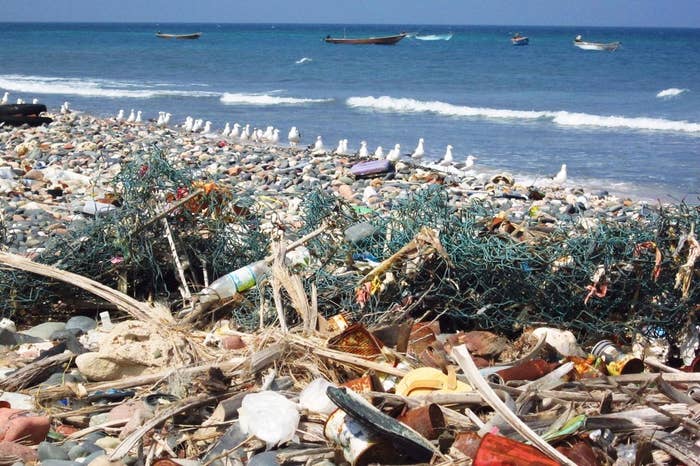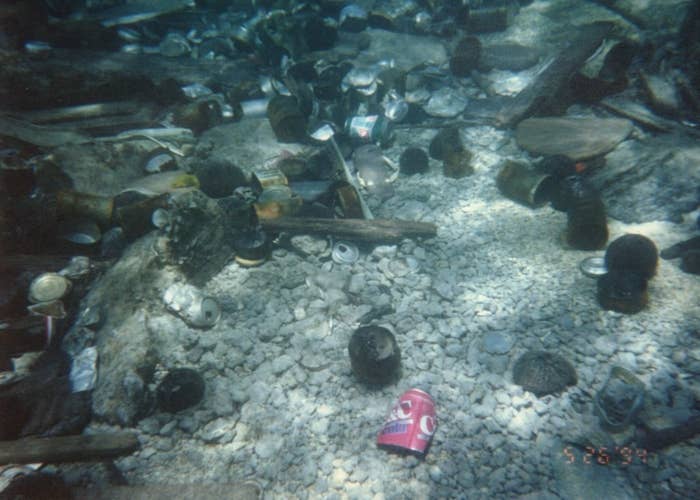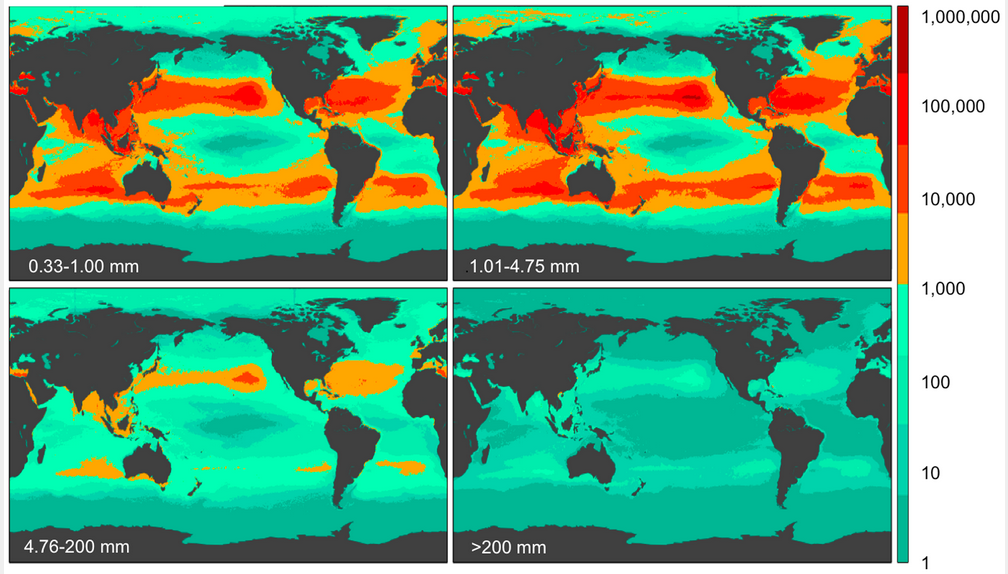
There are at least 5,250,000,000,000 pieces of plastic in the world's oceans, a new study estimates.
The study, published Wednesday in the scientific journal PLOS ONE, points out that "plastic pollution is ubiquitous throughout the marine environment." To study the problem, scientists consequently embarked on a series of 24 expeditions to look at and haul up plastic. The researchers ultimately visited 1,571 locations around the world.
The researchers also estimated that all the plastic in the ocean weighs 268,940 tons. And that's "highly conservative," they wrote, because even more plastic may be lying around on beaches, inside animals, on the seabed, or hidden elsewhere in the water.

That means there are about 48 times as many pieces of plastic in the ocean as there are people who have ever lived on Earth.
A widely cited estimate puts the total human population since the dawn of the species at about 108 billion. The estimate comes from the Population Reference Bureau and includes with a number of qualifications. But assuming it's more or less accurate, it means there are about 48 times as many pieces of plastic as there are humans in the history of the world.
Or, put another way, this means that if we took all the plastic out of the ocean and divided it up among all of humanity ever, everyone would get (at least) 48 pieces each.
Of course, a lot of those pieces are very, very small. The study found that 92.4% of the particles were "microplastics" that are 4.75 millimeters or less thick. Still, most of those particles came from larger pieces breaking up. And larger "macroplastics" — things like fishing gear, old buoys, and bottles — actually contributed the most to the overall weight of the the oceans' plastic content.
And speaking of weight...
All of this plastic weighs more than 500 fully loaded Boeing 747s.
A 747 has a maximum takeoff weight of nearly 500 tons, meaning that it would take nearly about 537 of the behemoth airplanes to equal as much weight as all the plastic in the ocean.

The plastic also weighs 26 times as much as the Eiffel Tower.
So dump 26 Eiffel Towers into the sea, then that's more or less equal to the amount of plastic that's out there.

The plastic in the northern and southern hemispheres is comparable, which surprised the researchers.
The maps below show the distribution of the plastic by size. The southern hemisphere oceans had less, but were "still within the same range as for the northern hemisphere oceans." This surprised the researchers because there are more "inputs" — such as people, shipping routes, etc. — in the north.

The researchers speculate on a variety of reasons of reasons that they found so much plastic in the southern hemisphere: plastic may move more easily than expected; there may be pollution sources they hadn't considered; or the plastic could sink more in the northern hemisphere.
Ultimately the researchers point out that all this garbage floating around in the ocean is hurting animals.
Even though much of the plastic is small, it ends up being consumed by sea creatures and working its way up the food chain. The researchers also write that it's "economically and ecologically prohibitive" to remove all this plastic, so it will probably end up buried in the sediment. That, the researchers write, reinforces the need to stop the flow of plastic into the ocean and "reverse this growing environmental problem."
